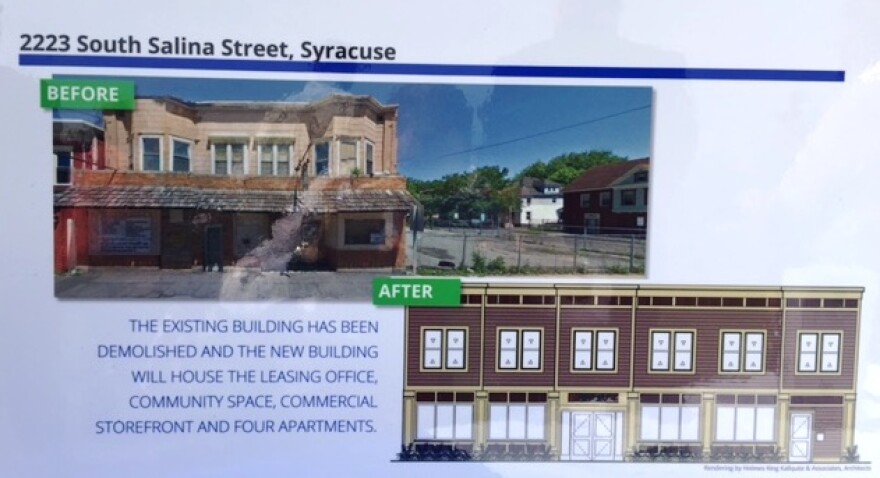Three years and nearly $15 million later, 10 scattered properties on Syracuse’s north and south sides are about to be built or rehabilitated into high quality affordable housing. A groundbreaking for the Salina Crossing project was held Friday.
The centerpiece will be a mixed-use building on the former site of the once grand Otisca building on North McBride street, which fell into disrepair and was ultimately demolished. Commissioner of Neighborhood and Business Development Paul Driscoll says the hardest part is finished…
"It seems like we've had some long, tenuous days worrying about this. I can think several years back during the winter; the condition of the Otisca building was of grave concern to the city. It's a real evidence of how community partners come together, with Housing Visions and Home Headquarters to address this issue of Otisca."

The other north side projects include rehabs of four properties on Townsend, McBride, and Hawley Ave. Housing Visions is the driving force behind this and many other projects on the north side over the past several years. Vice President of Business Development Ben Lockwood reflects on the progress…
"If you just look over at the corner where the Kinney Drugs is there, and we talk about development, who in their right mind seven years ago would have thought market rate units would be raising there, and then another block, Cosimo Zavaglia is going to build some more. We couldn't have dreamed of that seven years ago when we started Prospect Hill."

But this project has Housing Visions branching out for the first time on the south side, as well…thus the name “Salina Crossing.” Lockwood says all will be new construction on McLennan avenue and South Salina Street.
"We were able to take on several vacant buildings on the south side, tax delinquent. Demolished them, going to replace them with some high quality housing as well as some mixed use commercial space on the 2200 block very close to the food co-op. We don't do it because it's easy, we do it because it's hard, but we know it's right."
The project also includes several units for those with traumatic brain injuries, mobility, hearing, or vision impairments. Funding came from a wide-range of state, city, and bank loans.



